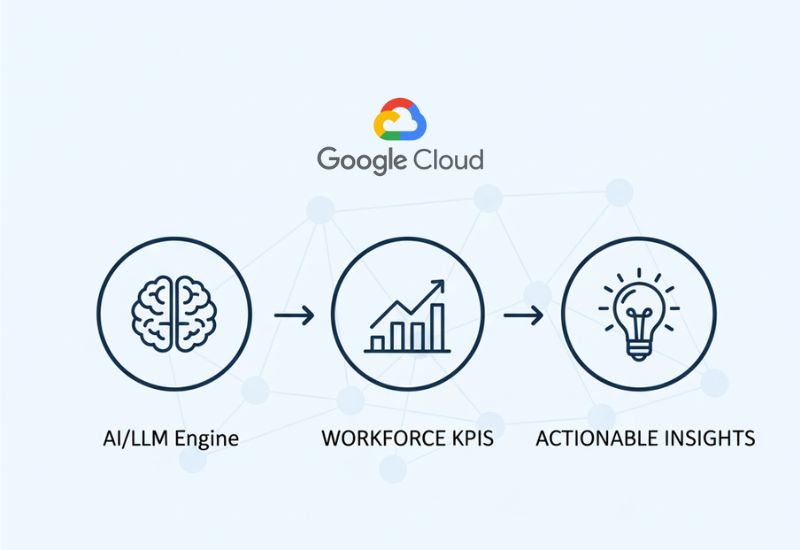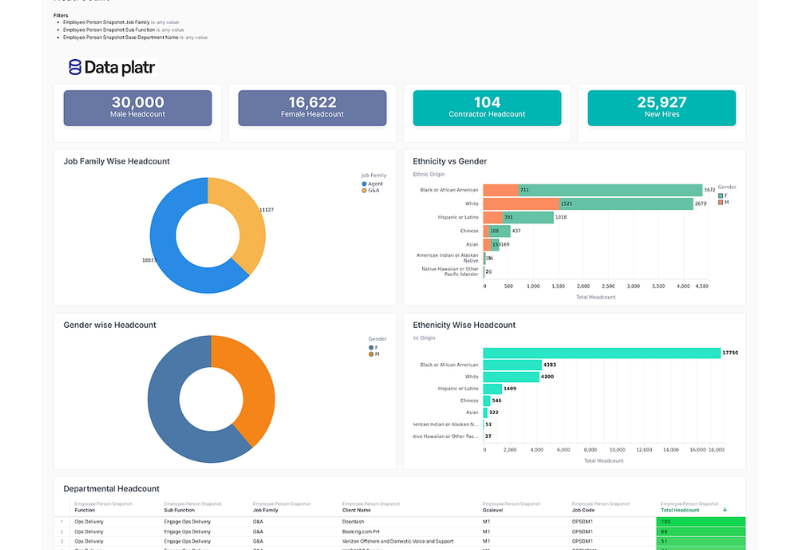As data volumes continue to grow across enterprises, the traditional centralized data architectures often struggle to scale. A new approach Data Mesh Architecture is emerging as a way to address the growing complexity of modern data environments.
In this blog, we’ll explore what data mesh architecture is, how it's implemented on platforms like Azure, Snowflake, and Google Cloud Platform (GCP), the core principles behind it, its limitations, and why it’s becoming a consideration for forward-looking organizations.
What Is a Data Mesh Architecture?
Data mesh is a decentralized approach to managing and accessing data across large organizations. Unlike traditional data lakes or data warehouses, which centralize data into one location, data mesh distributes data ownership across different business domains.
Each domain such as marketing, finance, or sales owns and manages its own data as a product. Teams are responsible not only for producing data but also for making it available in a usable, reliable, and secure format for others.
This domain oriented model promotes scalability by minimizing bottlenecks that occur when data is funneled through a centralized team.
What Is Data Mesh Architecture in Azure?
Data mesh architecture Azure refers to a decentralized, domain oriented approach to managing and accessing data within an organization's data platform, particularly in the context of large, complex ecosystems. It emphasizes distributed data ownership across business domains, creating "data products" that are easily discoverable and accessible by other domains. This contrasts with traditional, centralized data architectures where a single team manages all data.
Microsoft Azure doesn’t have a single tool called “data mesh” but it gives you the parts you need to build one. You can use different Azure services to manage and work with data. For example, Azure Synapse Analytics helps process large amounts of data, and Azure Data Factory helps move and organize it.
Azure Purview keeps track of where data comes from and helps with data rules and policies. Azure Data Lake Storage stores big data safely, and tools like Azure Databricks or Microsoft Fabric help with deeper data analysis or machine learning.
With the right setup, different teams in a company can manage their own data while still following company-wide rules. Azure also allows secure access control and keeps data organized using catalogs, so teams can work independently without creating confusion or delays.
What is the data architecture of Snowflake?
Snowflake is a cloud based data platform that helps companies store, process, and share large amounts of data. It allows different teams to use the same system while still managing their own data separately.
Snowflake is built to handle big workloads and many users at the same time. It uses a multi-cluster system, which means teams can run their data jobs without slowing each other down. It also supports secure data sharing, so teams can easily give others access to their data when needed.
Each team can control its own data, including who can see it and how it’s used. Data mesh architecture snowflake has tools for data governance, which help teams set rules for access, security, and compliance. It supports different types of data, like traditional tables or semi-structured data such as JSON. While everything is stored in one place, responsibility is shared teams manage their own data as if it’s their own product.
What is the architecture of GCP?
Google Cloud Platform is a cloud service that gives companies the tools they need to manage and analyze large amounts of data. It’s often used to build a data mesh, where different teams control their own data but still follow shared rules.
One of the main tools in GCP is BigQuery, which helps teams quickly analyze big data sets. Dataplex is used to keep data organized and make sure teams follow the same data rules. Pub/Sub and Dataflow help move and update data in real time, which is useful when information needs to stay current.
Another useful tool is Looker, which lets teams build their own dashboards and reports. data mesh architecture gcp allows teams to connect these tools in ways that fit their work. Among them, Dataplex stands out because it helps keep things consistent across all teams, even when they work separately.
We work closely with our technology partners Microsoft Azure, Snowflake, and Google Cloud Platform to support organizations in making this shift. Together, we combine platform capabilities with our domain expertise to help build decentralized, domain data ecosystems that are scalable, secure, and aligned with real business needs. Whether it’s setting up the infrastructure, enabling data governance, or guiding teams to treat data as a product, our joint approach ensures that data mesh is not just a concept but a working solution customized for your organization. Also see how our Data Analytics Consulting services can help you move toward a data mesh model that’s easier to manage and fits your business goals.
What are the 4 principles of data mesh?
Data mesh is a modern approach to managing data at scale by decentralizing ownership. Instead of relying on a central team, it empowers individual domains to manage, share, and govern their own data. Let’s explore the four data mesh principles that make this model both scalable and effective for modern enterprises.
1. Domain-Oriented Data Ownership
Each team is responsible for its own data. This means they take care of collecting, updating, and keeping their data accurate. Instead of relying on one central data team, every business area handles its own information. This helps reduce bottlenecks and gives teams more control.
2. Data as a Product
Teams should treat their data like a product that others will use. That means it should be clean, reliable, well-documented, and easy to find. Someone from the team should be clearly responsible for making sure the data is useful and up to date. This helps other teams trust and use that data without confusion.
3. Self-Serve Data Platform
Teams need access to the tools and systems that let them work with data on their own. A self-serve platform gives them everything they need like storage, processing tools, and security settings without always depending on the central IT team. This speeds up work and makes teams more independent.
4. Federated Governance
Even though teams manage their own data, there still need to be shared rules. Federated governance means there are common standards for privacy, security, and data quality that all teams must follow. This keeps things safe and consistent, while still allowing teams to work the way that suits them best.
What are the downsides of data mesh?
Data mesh gives teams more control over their own data, but it also comes with some Data Mesh Challenges. While it can make data management faster and more flexible, it only works well when teams are ready to take on that responsibility. If the people managing the data aren’t trained or don’t have the right tools, things can go wrong quickly.
One of the main issues is that data mesh needs strong data skills within each team. Teams must know how to manage, clean, and protect their data. This can lead to higher costs, as each team might need its own tools, training, and support. It also becomes harder to keep everything consistent. Different teams may follow different standards unless clear rules are set.
Another problem is cultural resistance. Many companies are used to having one central team in charge of all data. Shifting control to separate teams can be uncomfortable and hard to manage. Without strong leadership and clear communication, this kind of change can cause confusion and slow down progress.
Why Should Organizations Consider Data Mesh Architecture?
Many companies are finding that the traditional way of managing data through one big central team is starting to show its limits. When all data has to go through one place, it can slow things down. Teams may have to wait a long time for the data they need, and it’s not always clear who’s responsible when problems come up.
Data mesh offers a new approach. It gives each team ownership of its own data, which means faster access, better quality, and clearer accountability. Instead of everything being handled by one group, every team plays a part in keeping data useful and up to date. This is especially helpful for large companies with many departments or fast-changing data needs.
Shifting to a data mesh model is a bold step forward. It's not a quick fix, but a smart move for companies ready to modernize how they handle data.
Conclusion
Data mesh architecture represents a shift in how organizations approach data at scale. By decentralizing ownership and treating data as a product, it addresses some of the most pressing limitations of traditional models. While it doesn't fit all solutions, for many modern enterprises, data mesh offers a path toward building more responsive, scalable and sustainable data systems.
Contact us at [email protected] or Book time with me to organize a 100%-free, no-obligation call
Follow us on LinkedIn for more interesting updates!!



























